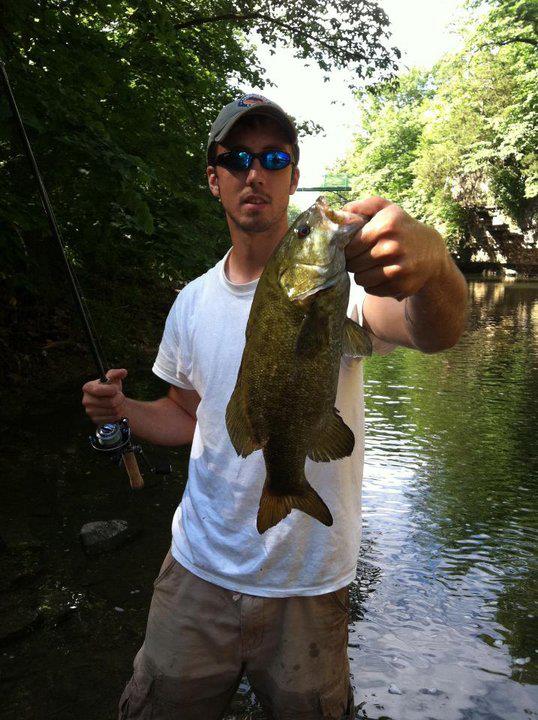Light Action Smallmouth Bass Fishing in the Eddy
 Light action fishing in eddies below a spillway can be a sure fire way to get a bend in your fishing rod. The techniques for fishing these eddies are most effective when simple and the brawl you get from smallmouth in the eddy will keep you coming back for more.
Light action fishing in eddies below a spillway can be a sure fire way to get a bend in your fishing rod. The techniques for fishing these eddies are most effective when simple and the brawl you get from smallmouth in the eddy will keep you coming back for more.
An eddy is a break in current in moderate to fast moving water. Many things can cause the relaxed water to form, such as an underwater boulder, log, or rock pile. Some things to look for when locating an eddy are fast moving water with a “seam” that transitions rapidly into slower moving water near the bank or deeper water, a whirling vortex in the water around some type of structure, or debris trapped in a swirl.
Smallmouth Bass Fishing in the Eddy
Smallmouth and other game fish tend to hover in the eddy for one specific reason: convenience. The current causes smaller bait to become trapped in the vortex. The fast moving water becomes a barrier to small fry, minnows, larvae, and other types of forage. The eddy allows the bronze backs to hang in slack current during the day, and in the dawn and dusk hours, smallmouths tend to move from slow currents to faster moving water to feed. Smallmouth prefer having an on the spot access to a fast water current with the simple thrust of a tail. This allows for foraging convenience. Don’t switch spots after catching one; there will likely be more in each hole.
When searching for and fishing eddies go on foot with a little extra tackle in a pack, a pair of boots with good ankle support, and an extra rod and reel with heavier action in case larger fish are located. Tracking down an eddy in this type of spot can be a little hazardous, so take extreme care. It’s not a bad idea to wear a life vest while “boulder hopping” in search of a good whirlpool. Keep backup rods ready with a few simple rigs when testing an eddy for hungry smallmouth bass.
One rigging method that is simple and effective is using the smallest split shot possible, a 12-16” leader, and a size 4 Gamakatsu Octopus or an Owner Mosquito Hook. Avoid snags by letting out too much line. Tipping this type of setup with either a leech or quarter section of a night crawler is sure to pay out with hook ups. The current causes the leech or to go into its swimming motion while being circulated in the pull. The more natural a bait can be presented, the better.
If bait control is posing a problem, another simple and effective solution is to fish the eddy using a small jig head tipped with either a 2” Berkley Power Grub or your favorite live bait. The lead weight of the jig head allows for the bait to be bounced or dragged along the bottom of the eddy, although, typically it won’t last that long to reach bottom before a smallmouth will intercept.
Small buck tail jigs tipped with minnow, leech, or night crawler will be an effective fishing lure choice especially in the colder months of the year when presentation needs to slow down a bit. Try it in the warmer months as well. There is a good chance buck tail jigs will produce larger smallmouth and weed out the smaller ones.
This was an excellent article by Guest, Rhett Wheeler
Thanks Rhett!

